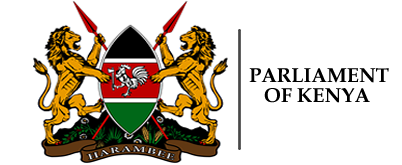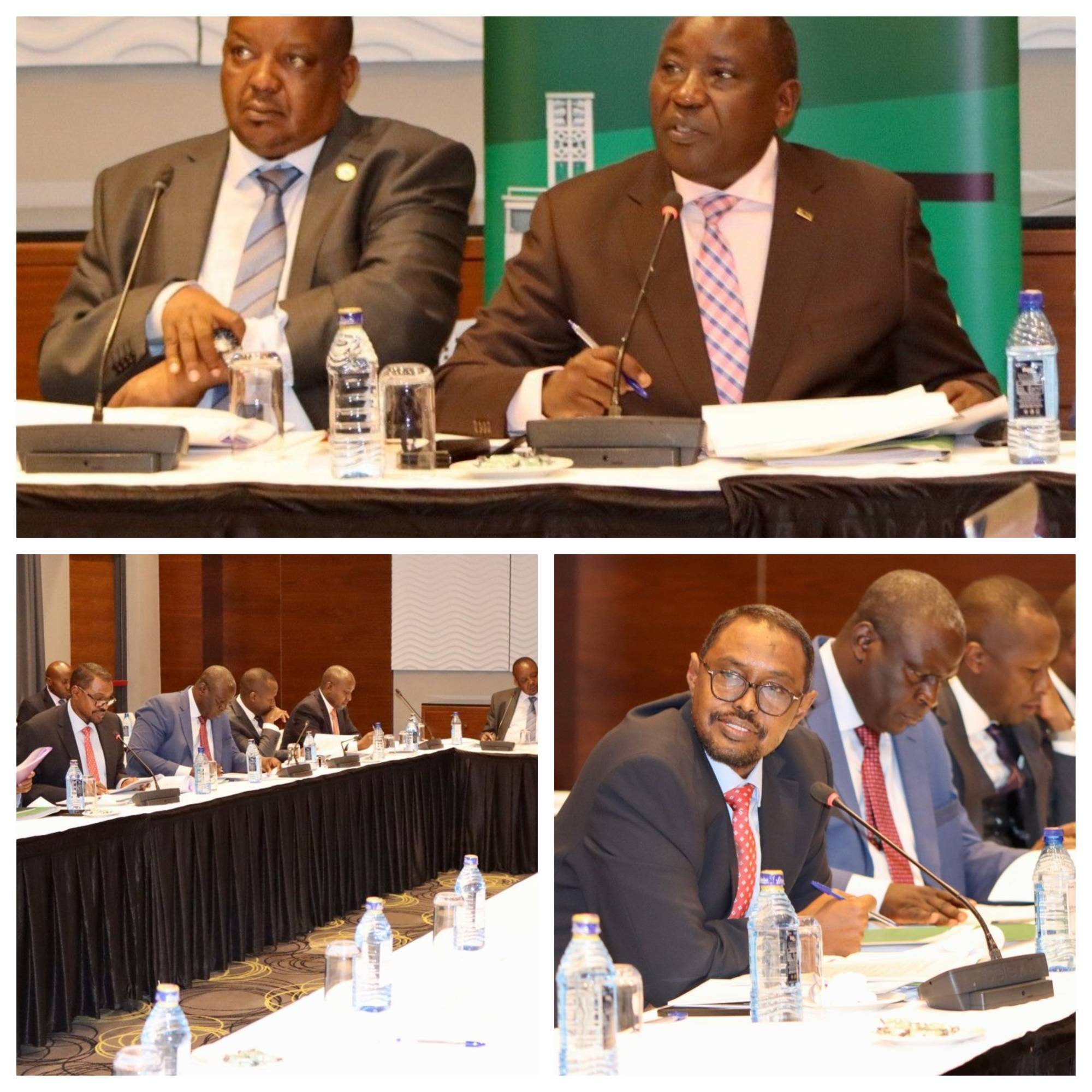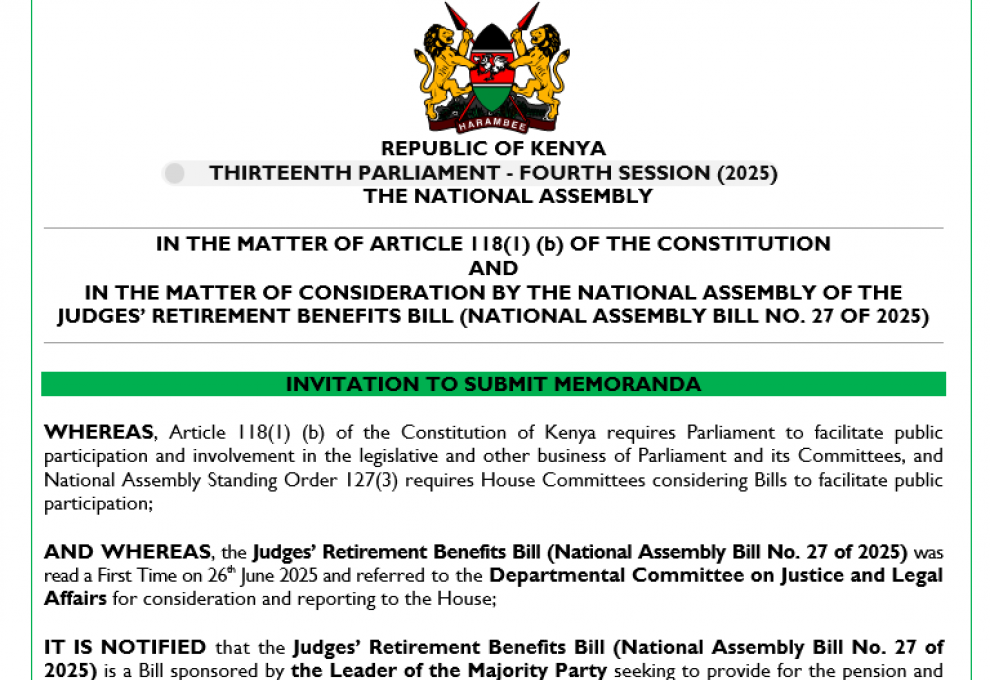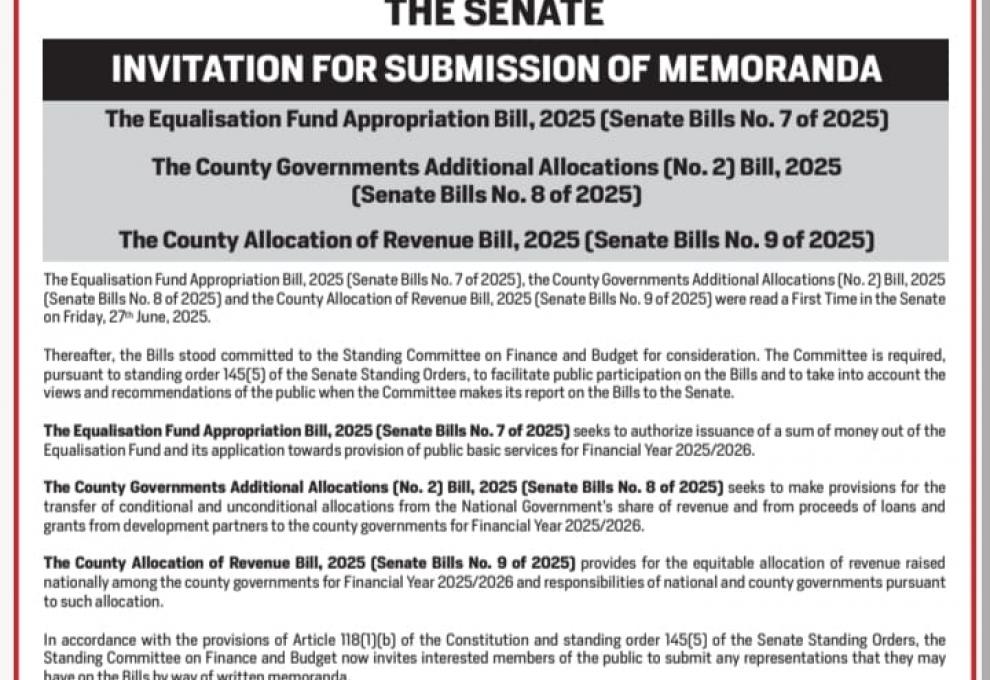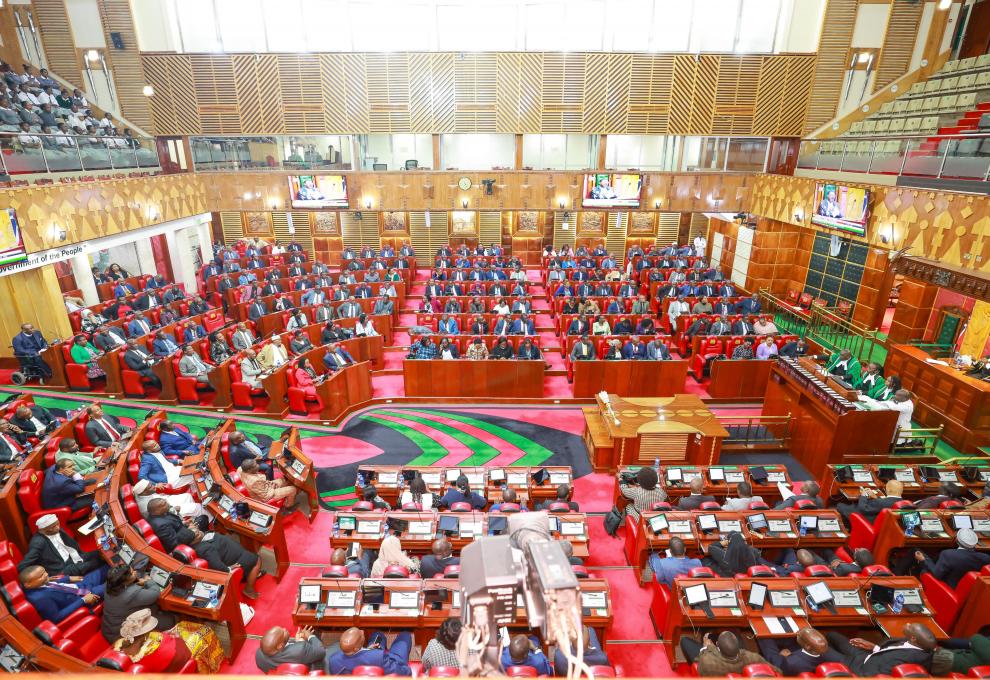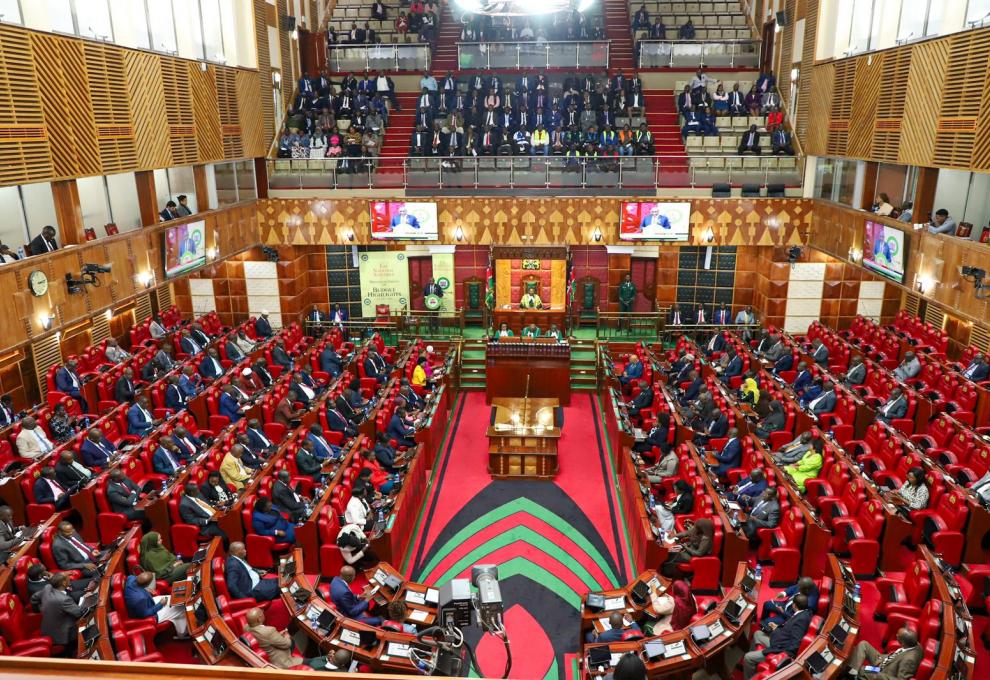𝐏𝐔𝐁𝐋𝐈𝐂 𝐃𝐄𝐁𝐓 𝐂𝐎𝐌𝐌𝐈𝐓𝐓𝐄𝐄 𝐑𝐄𝐂𝐄𝐈𝐕𝐄𝐒 𝐒𝐔𝐁𝐌𝐈𝐒𝐒𝐈𝐎𝐍𝐒 𝐁𝐘 𝐍𝐀𝐓𝐈𝐎𝐍𝐀𝐋 𝐓𝐑𝐄𝐀𝐒𝐔𝐑𝐘 𝐎𝐍 𝐏𝐔𝐁𝐋𝐈𝐂 𝐅𝐈𝐍𝐀𝐍𝐂𝐄 𝐌𝐀𝐍𝐀𝐆𝐄𝐌𝐄𝐍𝐓 𝐀𝐌𝐄𝐍𝐃𝐌𝐄𝐍𝐓 𝐁𝐈𝐋𝐋
The National Assembly Public Debt and Privatization Committee led by the Vice Chairperson Hon. (Dr.) Makali Mulu met with officials from the National Treasury led by the Principal Secretary (PS), National Treasury and Economic Planning Dr. Chris Kiptoo who made submissions on the Public Finance Management (Amendment) BIll (2023).
According to Dr. Kiptoo, the available borrowing space as at the end of April 2023 was Kshs. 400 billion, against a fiscal deficit of Kshs. 718 billion, indicating the inability within the law to finance the Financial Year 2023/2024 budget.
“We are just getting the flexibility in the sense that you may have a choke with the economy if the shilling moves in an uncontrollable manner and affects your debt of stock without even thinking of borrowing, hence the amendment will allow such adjustment. explained Dr. Kiptoo.
Members raised concern on the proposed insertion of an additional provision to Section 50(2):- “Cabinet Secretary to submit a report to Parliament in the event there is a breach on the threshold indicating a remedial plan to be undertaken.”
However, the PS assured the Committee that there is no budget that may be effected without Parliamentary approval, and as such the National Treasury will always engage Parliament on financial matters.”
Other proposed amendments to the Bill include the insertion of a new definition of “Financial Obligations” in relation to public debt, to include outstanding amounts of actual current liabilities that require payment(s) of principal and or interest and expenses incidental to the liabilities by the government.
The National Treasury also proposed the substitution of section 15(2)(d) to enable the Public Debt Management Office to advise Parliament and the Cabinet Secretary on the sustainable levels of public stock of debt as they set the public debt threshold.
Some of the key actions suggested by the National Treasury to guide borrowing and debt management in the medium-term include use of long-term Treasury Bonds for refinancing maturing domestic debt alongside reduction of short-term domestic debt instruments to minimize the refinancing risks.
In addition to that, maximizing use of concessional borrowing over the medium-term and only considering commercial borrowing as a residual, would have a positive net effect of reducing interest payments and related costs.

